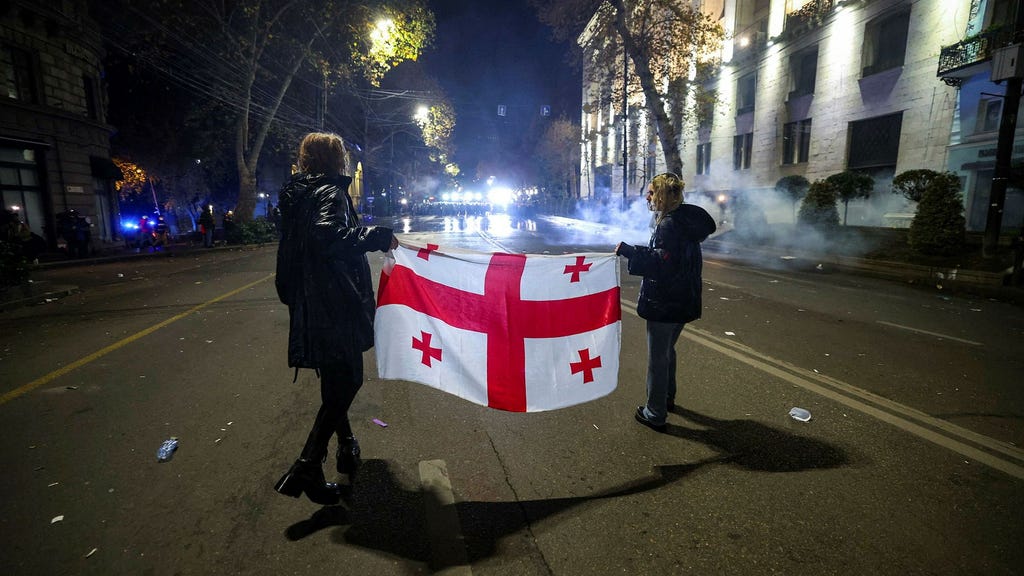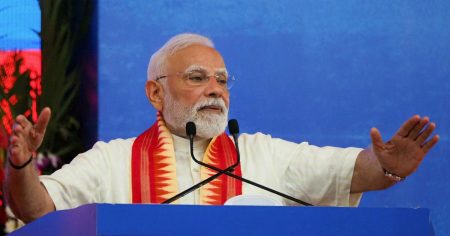The recent demonstrations in Georgia have emerged as the largest in many years, drawing attention from analysts like Jakob Hedenskog at the Center for East European Studies at the Swedish Institute of International Affairs. He compares the situation to the 2014 Euromaidan protests in Ukraine, which culminated in the ousting of pro-Russian President Viktor Yanukovych. However, Hedenskog cautions that such parallels are complex; the aftermath of the Euromaidan revolution was marred by Russia’s annexation of Crimea and escalation of conflict in Eastern Ukraine, highlighting that the outcomes of such movements can be dire and multifaceted, rather than strictly positive.
Hedenskog outlines four potential scenarios in response to the current unrest, with the most violent outcome being a brutal crackdown by the government that forces the protestors to retreat. The second scenario involves a compromise between the government and the demonstrators, although given Georgia’s deeply polarized political landscape, Hedenskog regards this as unlikely. The third possibility is that the protest wave could gain momentum, leading to significant political fractures that may ultimately result in the government’s collapse. Recently, pro-Western President Salomé Zourabichvili, who primarily holds a ceremonial role, announced her intention to remain in office until the end of her term in December, even as several ambassadors and officials have resigned in protest.
The prospect of significant fissures within the political elite has become apparent, suggesting that the government could be increasingly challenged by internal dissent. Hedenskog notes that there is a growing tendency among elite members to express their discontent, indicating potential instability at the top echelons of power. While the current administration retains control, the mounting protests signal widespread discontent that cannot easily be ignored. This political unrest reflects a broader dissatisfaction with how the government has aligned itself with Russian interests, raising questions about its legitimacy and sustainability.
The fourth scenario presented by Hedenskog is particularly concerning: he warns of the possibility of foreign intervention, predominantly from Russia, as tensions continue to rise. The ruling party, Georgian Dream, has faced accusations of acting as a puppet for the Kremlin, and it is suggested that Moscow may seek to maintain its influence in Tbilisi by intervening should the regime face significant threats. Hedenskog believes that it is unlikely Russia would passively observe the downfall of a regime that has adapted significantly to its policies, suggesting that external factors could further complicate an already volatile situation.
The ongoing protests have also led to violence against opposition leaders, indicating the escalation of tensions in the country. Reports of severe mistreatment and arrests underline the stakes involved in the struggle against an increasingly authoritarian government. As the situation intensifies, even President Zourabichvili has declared her participation in the protests, labeling the country as being in a state of rebellion. The political landscape is shifting rapidly, and reactions from both government and opposition factions will likely define Georgia’s immediate future.
In summary, Georgia is at a pivotal crossroads amidst widespread demonstrations, with analysts observing parallels to Ukraine but also warning of the precarious nature of such movements. The scenarios Hedenskog outlines reflect significant risks, including government repression, political instability, and possible Russian intervention. As various political actors navigate the crisis, the outcome will depend greatly on the ability of both the ruling authorities and the protestors to respond to the evolving dynamics. The coming days and weeks will be crucial in determining whether Georgia can forge a path toward stability or if it will descend further into chaos.














